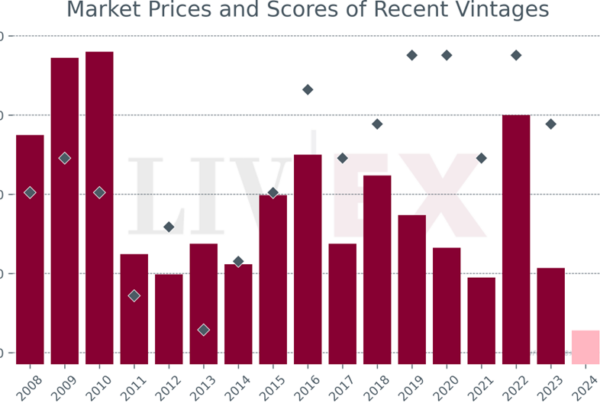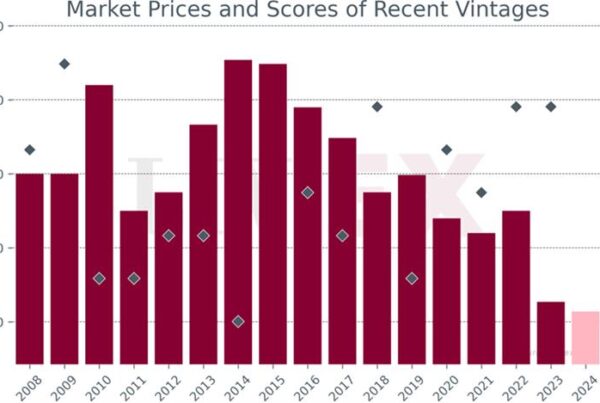The St
Emilion 2012 Classification has thrust Pavie and Angelus into the spotlight
this week, with their upgrade to Premier Grand Cru Classe A generating good trading
activity for both. In the week following the announcement, Pavie has accounted
for an impressive 14.8% of all trades on Liv-ex, while Angelus closely follows
behind with 12.2% (Lafite Rothschild was third, with 11.9%).
With four wines now categorised as Premier Grand Cru Classe
A, the St Emilion wines provide an interesting comparison to their five top
Left Bank counterparts, the Medoc First Growths. The chart below shows their average relative
Liv-ex trade prices per 12×75, for the 2000-2009 vintages. Although the
majority of First Growths are more expensive, the spread between the price
averages for St Emilion wine is greater than those of the Medoc. With the
average 12×75 of Angelus at £1,600 and the average of Ausone at £7,662, the
latter is almost four times more expensive than the former. Meanwhile, the
cheapest Left Bank wine, Haut Brion, is still more than half the price of the
most expensive, Lafite. The spread of averages within the categories would
suggest that Angelus and Pavie are currently priced below their potential.
The volume of wine produced each year for the Medoc First
Growths is also notably more than that of the St Emilion wines. Limited
production and scarcity leads to high prices for Ausone, which produces just
2,000 cases per year: just one fifth of the cases of Angelus.

Recent
trades in Pavie and Angelus suggest they have already benefitted – in the
short-term, at least – from the upgrade. Although a variety of vintages has
traded, newer wines are generating the most interest.The 2009s are outperforming
for both: Pavie’s perfect-scoring vintage (LWIN 1013850) accounted for 38.3% of its trades in
the last week (and 5.7% of total trades), while Angelus’ 2009 (LWIN 1006045) – scored 96 on
Wine Spectator – accounted for 75.4% of its own trades (and an impressive 9.2%
of total trades). With both more than half the price of any other of the 2009s for the wines above, and the majority of their vintages below the £1,500 mark per
12×75, their new status has certainly drawn buyers’ attention to their relative
value. Whether the interest continues beyond the immediate news frenzy will
tell how much these two brands stand to gain long-term from joining the top
ranks of St Emilion.




